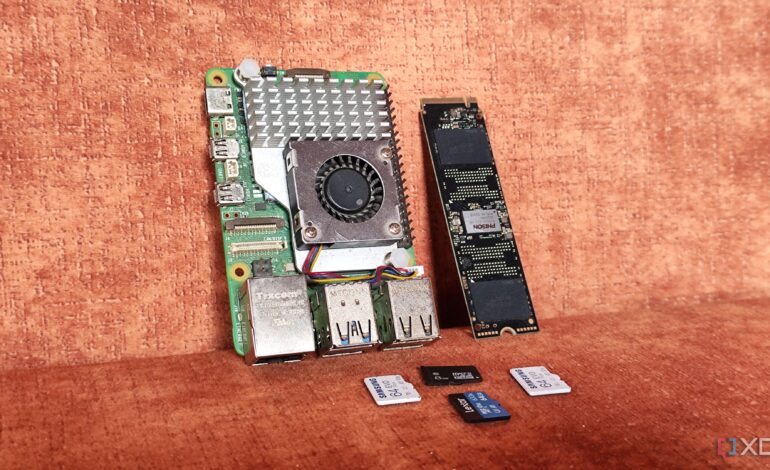Upgrade Your Raspberry Pi: Why You Should Ditch SD Cards

The use of microSD cards for booting Raspberry Pi devices has long been the norm, but experts are now highlighting the advantages of alternative storage options. While microSD cards were revolutionary when Raspberry Pi first launched, newer technologies can significantly enhance performance and reliability.
Performance Limitations of MicroSD Cards
Many users have relied on microSD cards due to their convenience and affordability. However, even high-end A2 microSD cards struggle to provide the speeds necessary for demanding applications. Typically, these cards do not exceed 100 MB/s in write speeds, which can result in performance bottlenecks during extensive operations.
The introduction of USB 3.0 ports on the Raspberry Pi 4B and 5 enables users to connect USB SATA SSDs, achieving speeds that can surpass 100 MB/s. For those with the Raspberry Pi 5, using an M.2 NVMe SSD can push read-write speeds beyond 300 MB/s, effectively doubling the performance compared to traditional microSD cards.
Switching to an SSD not only enhances speed but also improves system reliability, particularly for services like Home Assistant and Jellyfin. Users can expect fewer failures and faster load times, which is crucial when running multiple applications.
Durability and Reliability
MicroSD cards are particularly vulnerable to failure due to their design, which is not optimized for extensive write operations. The risk of data corruption increases, and without a backup, users may find themselves without access to critical files.
While high-endurance microSD cards can withstand more write operations than standard options, they still do not match the longevity of SSDs or traditional hard drives. Many users report experiences where their microSD cards failed after significant use, leading to data loss. In contrast, SSDs have proven to be reliable over years of use, often outlasting multiple operating system installations and heavy data loads.
The cost of reliability is another factor; while users previously opted for microSD cards, prices have shifted. A 128 GB microSD card can now cost over $20, whereas a 240 GB SSD can be found for under $30. This price difference provides users with a more robust storage solution without a significant increase in investment.
Availability and Future Trends
Finding high-capacity microSD cards has become increasingly challenging. The official Raspberry Pi 128 GB microSD card is often out of stock, while SSD options are readily available in larger capacities. The shift in focus towards native SSD support in newer Raspberry Pi models indicates a trend away from microSD cards.
As technology continues to evolve, the demand for microSD cards may decline, particularly as more single-board computers integrate features such as PCIe slots and eMMC storage. Although microSD cards will remain part of the ecosystem, their role is likely to diminish as users seek more reliable and faster alternatives.
In summary, Raspberry Pi users are encouraged to consider alternatives to microSD cards for booting their devices. The performance benefits of using USB SSDs or NVMe drives, combined with increased durability and better pricing, make them a superior choice for both novice and experienced users. Transitioning to these technologies not only enhances the overall experience but also lays a foundation for more demanding projects in the future.






